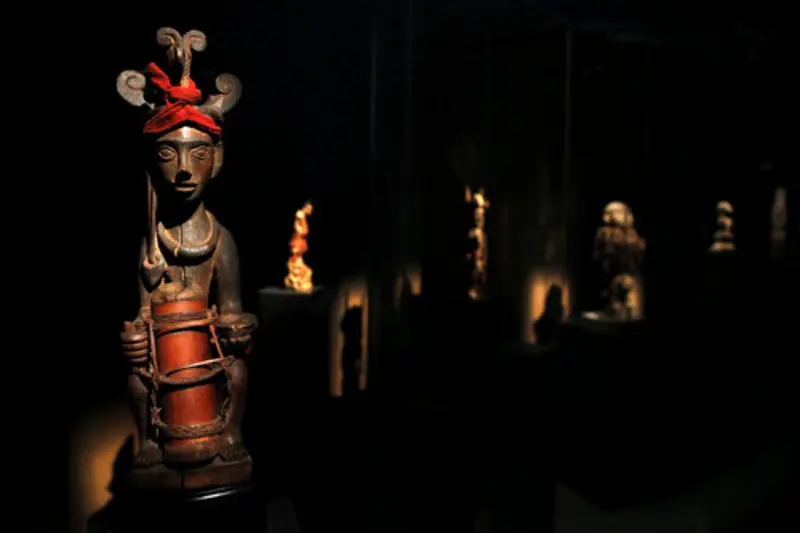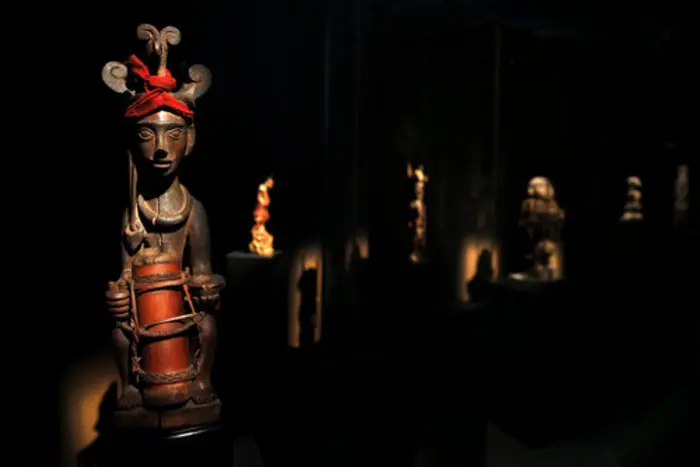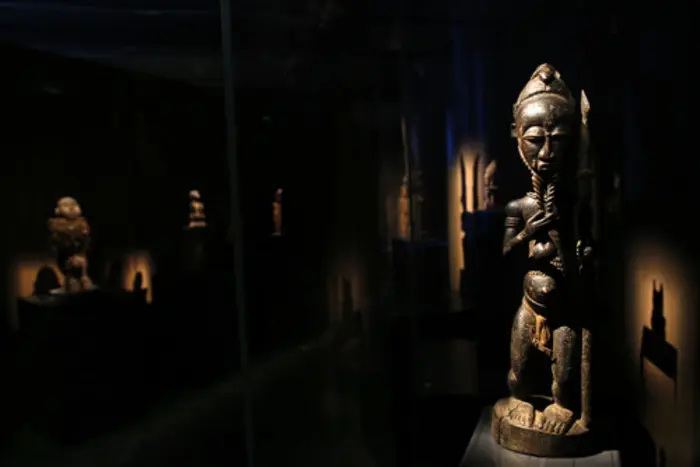[Translate to English:] Zu wem hast du gehört?
They were worn, danced, loved, cared for, revered and protected. Often we do not know their makers, even more rarely their first owners. Thus all these objects are actually only fragments of stories, of personal and collective destinies.
These mostly anonymous objects have reached the museum in many ways. Donated or exchanged, sometimes bought, but often also violently plundered during colonial wars. Such is the difficult history of these collections. The question arises as to how a museum deals with this history today.





